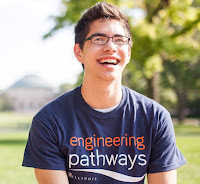 |
| Photo: Zlicovek, Shutterstock |
Biomimicry Chicago co-founder, Amy Coffman Phillips, was recently asked to contribute to the Biomimicry Institute's new blog, Asking Nature. Check out her thoughts on "Nine Reasons Why Applying Biomimicry to Built Environment Projects is a Win-Win-Win!"
"Designers in the building industry are continually looking for new and innovative ways to create beautiful, livable spaces that are environmentally responsible and resilient. Increasingly, those on the leading edge are looking to nature as a source of inspiration. Here are nine examples of how applying biomimicry in the context of the built environment can help designers, projects, and communities as they work to create naturally sustainable, inherently resilient spaces."Curious to learn more? Check out the next Chicago Biomimicry Immersive Workshop THIS SATURDAY! Enter promo code 'BioChi10' for 10% off the cost of registration!
http://biomimicry.org/next-design-innovation-built-environment-learning-nature/








